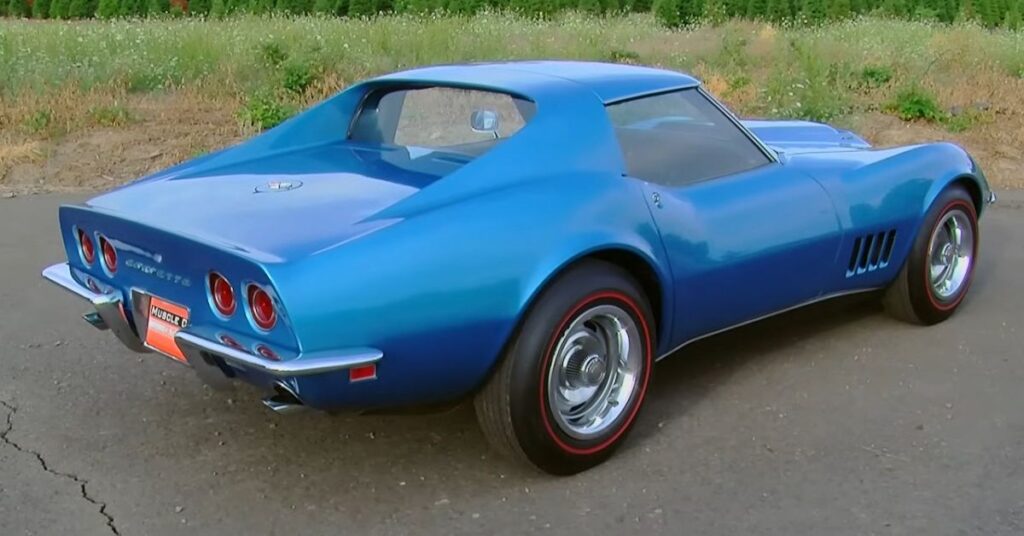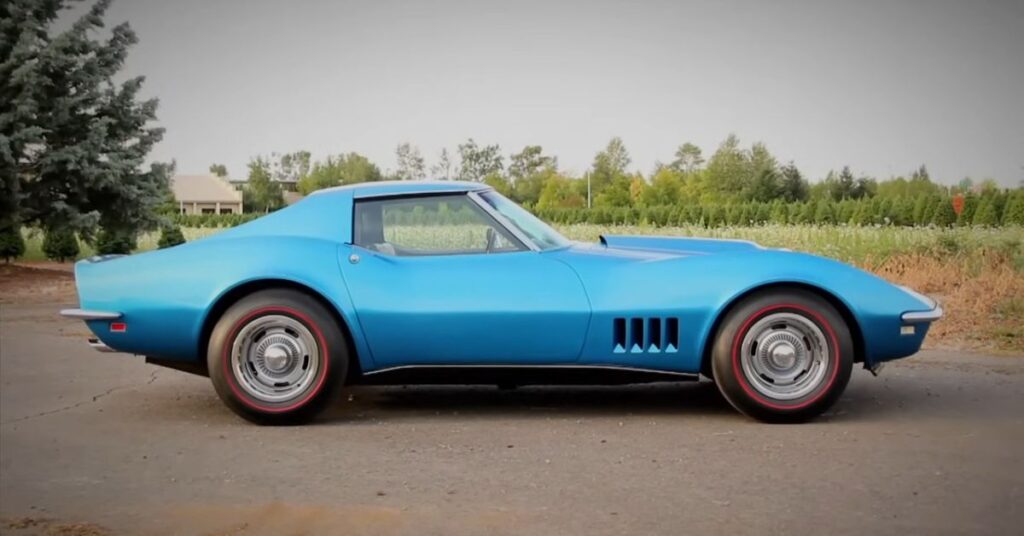First of all, Chevrolet changed the way the Corvettes were manufactured. They tried to make a more mainstream production model instead of being built on a special line with a little additional care. So for ’68, you had not only an all-new car design but also an all-new process in how they built these cars. And that meant they had some issues when the cars first hit the streets. You’ve heard the old story: you don’t buy the first model of any particular generation until they get the bugs worked out. Well, the ’68 Corvette was known for having a bunch of bugs in the very beginning. Eventually, they sorted this stuff out.

Today, we’re looking at a 1968 Corvette that is fitted with the RPO L88 package, which makes it one of the rarest Corvettes ever built. And the quality issue doesn’t even matter on this car. Allow me to explain and qualify that statement. I think the first thing we have to do is look at where Corvette fit into the marketplace. It was Chevrolet’s highest line car. It stood for performance, luxury, and status. And that 435 horsepower L71 car is the one that was advertised as being the top-flight Corvette. These L88 cars, they kind of flew under the radar. I mean, you had to know what this thing was to order one because this wasn’t promoted to the mainstream general public. And here’s why.
The RPO L88 Package: A Rare and Powerful Option
Although the literature claims this thing has five less horsepower than the three two-barrel L71 car, it turns out the reality is that the engine is very, very different. It’s got much higher compression, solid lifters, an aluminum intake, and aluminum heads. It’s got a single four-barrel carburetor on it. No options, heavy-duty suspension, heavy-duty brakes.

So this car was rumored to be capable of going 170 miles an hour right off the showroom floor. But with that kind of power and performance comes a sacrifice. And in the case of the L88, this car doesn’t have any street manners. I mean, although it has a special aluminum radiator, they still ran hot if you drove it on the street. But when you’re cruising down a racetrack at top
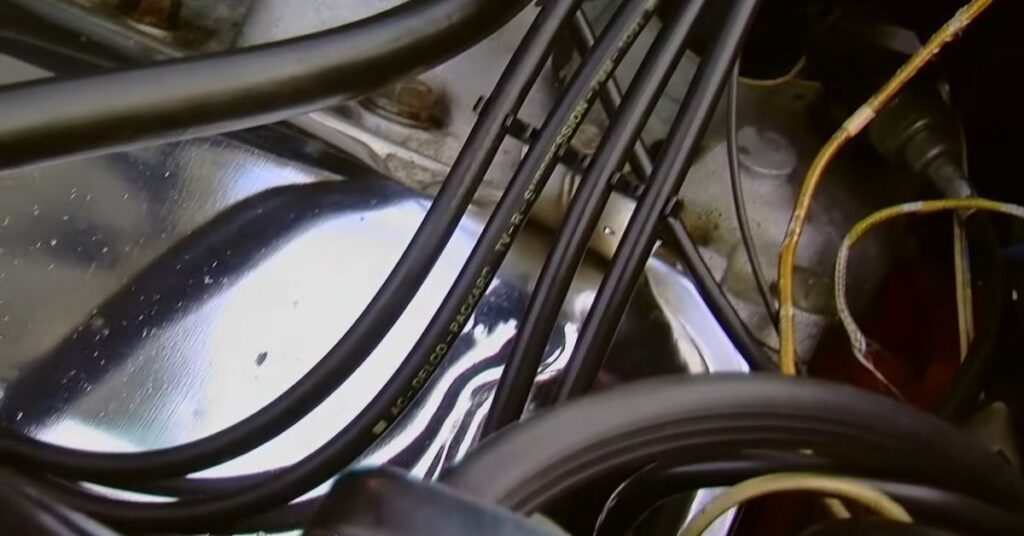
speed, you know, the airflow helps cool it, so you don’t have to worry about it idling in traffic on the way to work. These things didn’t start very easily. They didn’t have daily driver reliability. So as you can imagine, if you’re a Chevrolet dealer and you want to sell a car, not only a premium Corvette but one that has a $947 option package like this L88, but yet it didn’t have any of the bells and whistles, so as a dealer, you’ve got some explaining to do.
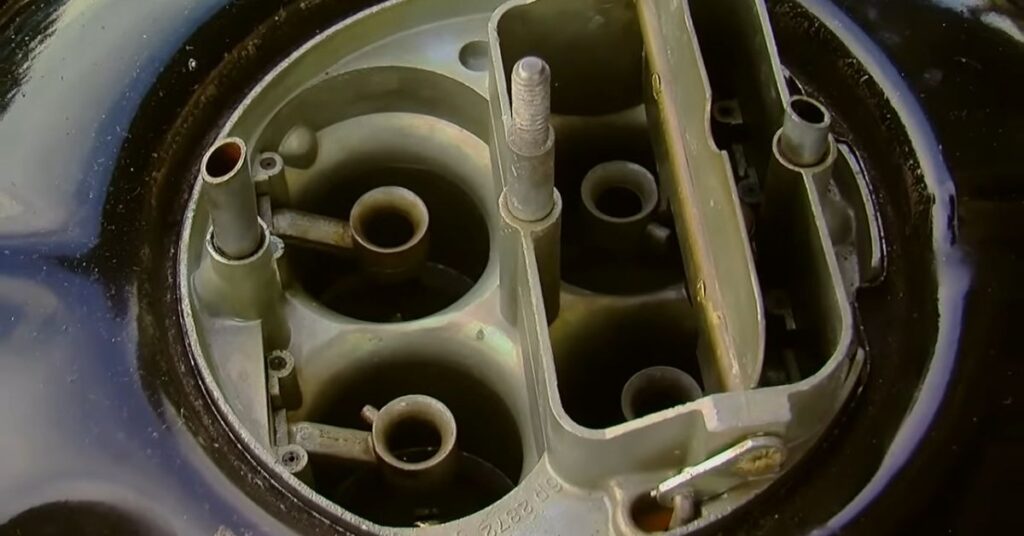
You know, somebody came up and said, “Why is this car so expensive when I can get one of the 435 horsepower cars for less money with more stuff on it? What’s the deal?” So Chevrolet actually kind of discouraged selling this car to the general public because it was only supposed to go to racers who understood what it was. You know, people that weren’t going to be showing up at the dealer looking for warranty work because the car was hard to start in cold weather or that it overheated at a stoplight. So it’s a very different animal.
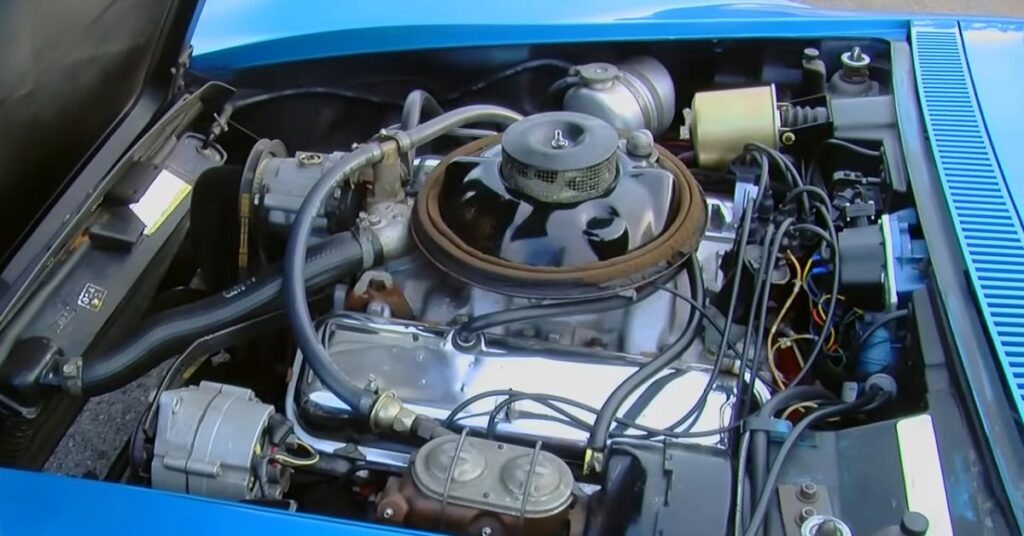
The L88: Flying Under the Radar
There’s another interesting tidbit about this car. It’s got a T-Top, which a lot of people think the name T-Top refers to the bar that’s exposed when you remove the twin removable panels opening up the roof. And in reality, that’s not the case. The T actually kind of stands for Targa Top. The term Targa Top is a trademark that’s owned by Porsche.

And a couple of years before this car came out, you could go buy a Porsche that had a removable one-piece section Targa Top roof. And Chevrolet tried that on this car to make it one piece, but they found they wanted a center bar to add a little reinforcement. So today, a lot of people think it’s the T-shape. It actually is short for Targa, but they didn’t have the rights to the word.
Exhaust
The 1968 Chevrolet Corvette L88 427 Coupe is an iconic American muscle car that epitomizes power and performance. Underneath its sleek and aerodynamic exterior lies a beastly engine known as the L88 427, which is renowned for its immense horsepower and torque. This monstrous powerplant is equipped with a large-bore aluminum intake manifold, a high-performance Holley carburetor, and high-flow cylinder heads, among other performance enhancements. When unleashed on the open road, the exhaust note of the L88 427 Coupe is nothing short of symphonic, producing a deep and rumbling growl that sends shivers down the spines of car enthusiasts. It is a sound that signifies raw power and exhilaration, a testament to the engineering prowess of Chevrolet.

As you sit inside the cockpit of the 1968 Chevrolet Corvette L88 427 Coupe, the exhaust fumes fill the air, creating an intoxicating ambiance that ignites your senses. The dual side exhaust system, a defining feature of this model, adds a touch of aggression to the car’s appearance while delivering an unmistakable roar. With every press of the throttle, the exhaust pipes unleash a thunderous cacophony that resonates through the cabin, immersing you in the symphony of mechanical prowess. The exhilarating sound of the exhaust is just as much a part of the driving experience as the acceleration and cornering capabilities, making each journey behind the wheel a thrilling adventure.

The 1968 Chevrolet Corvette L88 427 Coupe is not just about power and noise; it also showcases the artistry of engineering. The exhaust system is carefully designed to optimize performance, with the headers, collectors, and mufflers working together to maximize the flow of exhaust gases. The purposeful tuning of the exhaust system ensures that the engine can breathe freely, resulting in improved power output and overall efficiency. The distinctive quad tailpipes at the rear of the car not only enhance the visual appeal but also serve as a testament to the meticulous craftsmanship and attention to detail that went into creating this legendary vehicle.
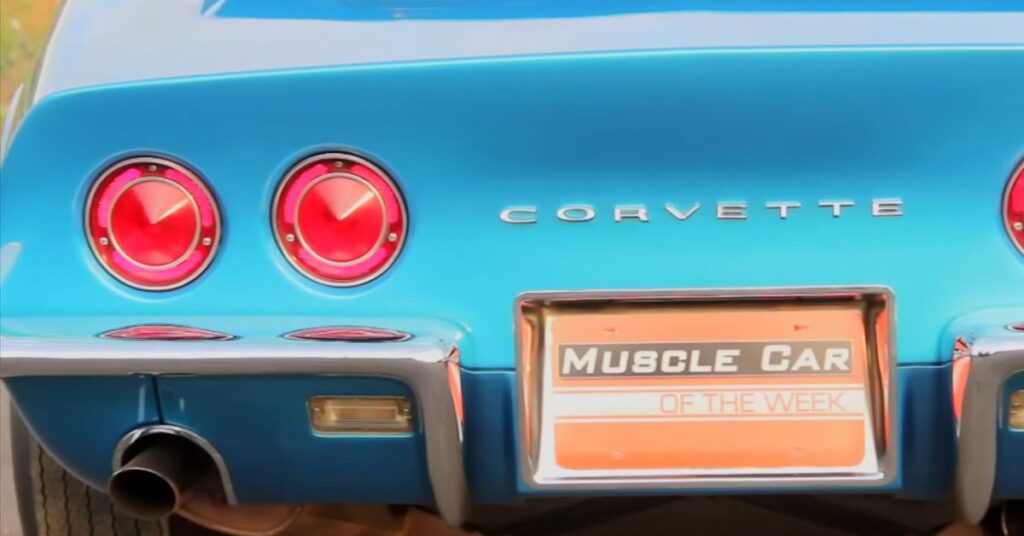
In conclusion, the exhaust system of the 1968 Chevrolet Corvette L88 427 Coupe is more than just an aesthetic feature. It is a symphony of power, a sensory experience that amplifies the thrill of driving this American automotive icon. The deep and resonating exhaust note, coupled with the precision engineering behind its design, serves as a constant reminder of the raw performance potential that lies beneath the Corvette’s hood. Whether you’re admiring its sleek lines or cruising down the highway, the exhaust of the L88 427 Coupe is an integral part of the car’s character, evoking excitement and passion with every rev of the engine.
Limited Production and Racing History
This car is showing 22,000 miles on the odometer, and a lot of these L88 cars were raced. There’s not many of them built. These were built for three years. In ’67, they made 30. In ’68, they made 80. And the rest of them were made for 1969. But this car was actually purchased by George Montgomery, and it was used as the official pace car at Minnesota’s Donington Speedway Park, which meant this car was not babied. Even though it wasn’t actually raced in competition because real pace cars on real racetracks, well, they get driven pretty hard because they’ve got to stay ahead of everybody.
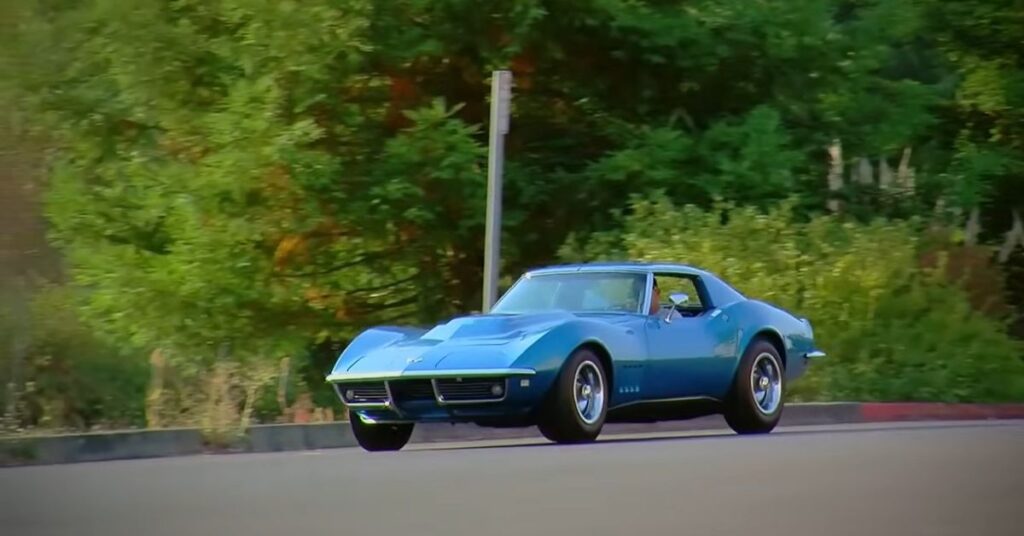
Another cool thing is that this car was prepped by legendary Corvette racer Dick Goldstrand so that it’d be in proper tune to be a good pace car. This car is mostly original. It’s been repainted once in the correct Le Mans Blue, but it has all of its original paperwork. It’s a very documented car, and it lives happily amongst a handful of other L88 cars in the Brothers Collection.
Conclusion
In conclusion, the 1968 Chevrolet Corvette L88 427 Coupe stands as a timeless masterpiece in automotive history. Its exhaust system, with its powerful sound and performance enhancements, plays a significant role in embodying the spirit of this legendary muscle car. From its iconic design to its thrilling driving experience, the Corvette L88 427 Coupe continues to captivate car enthusiasts and leave a lasting impression.
